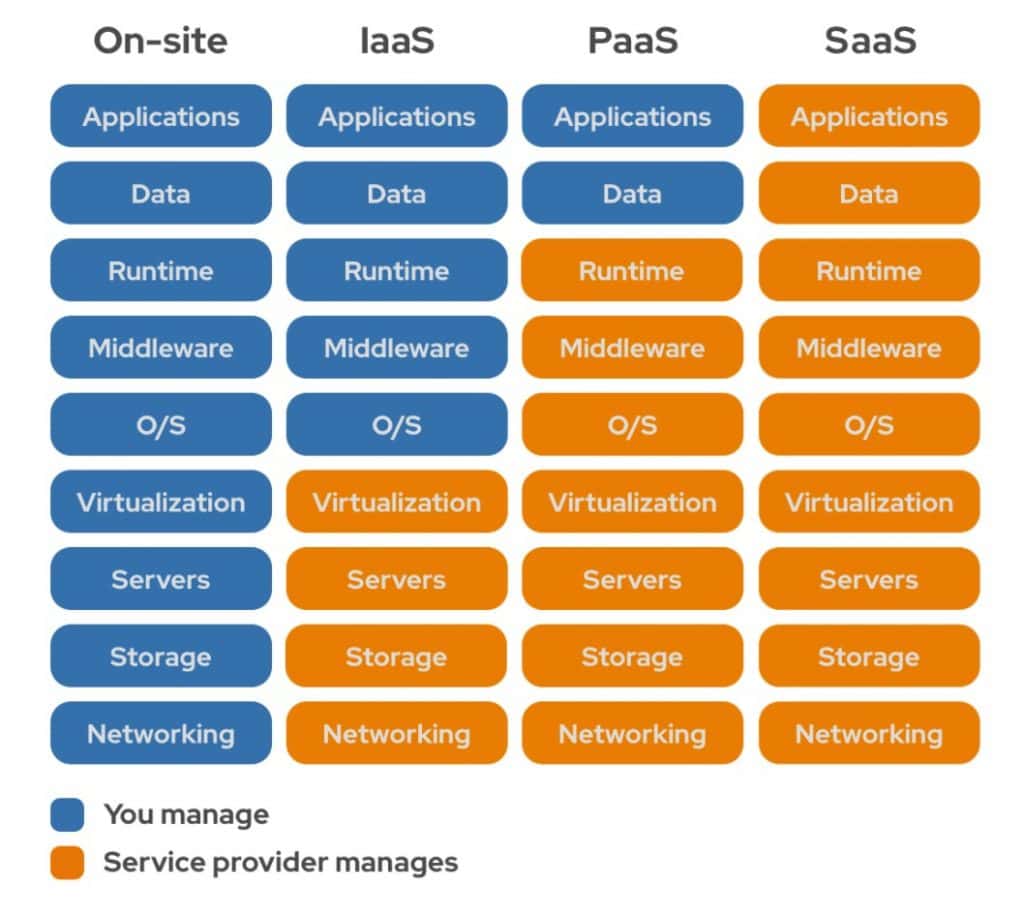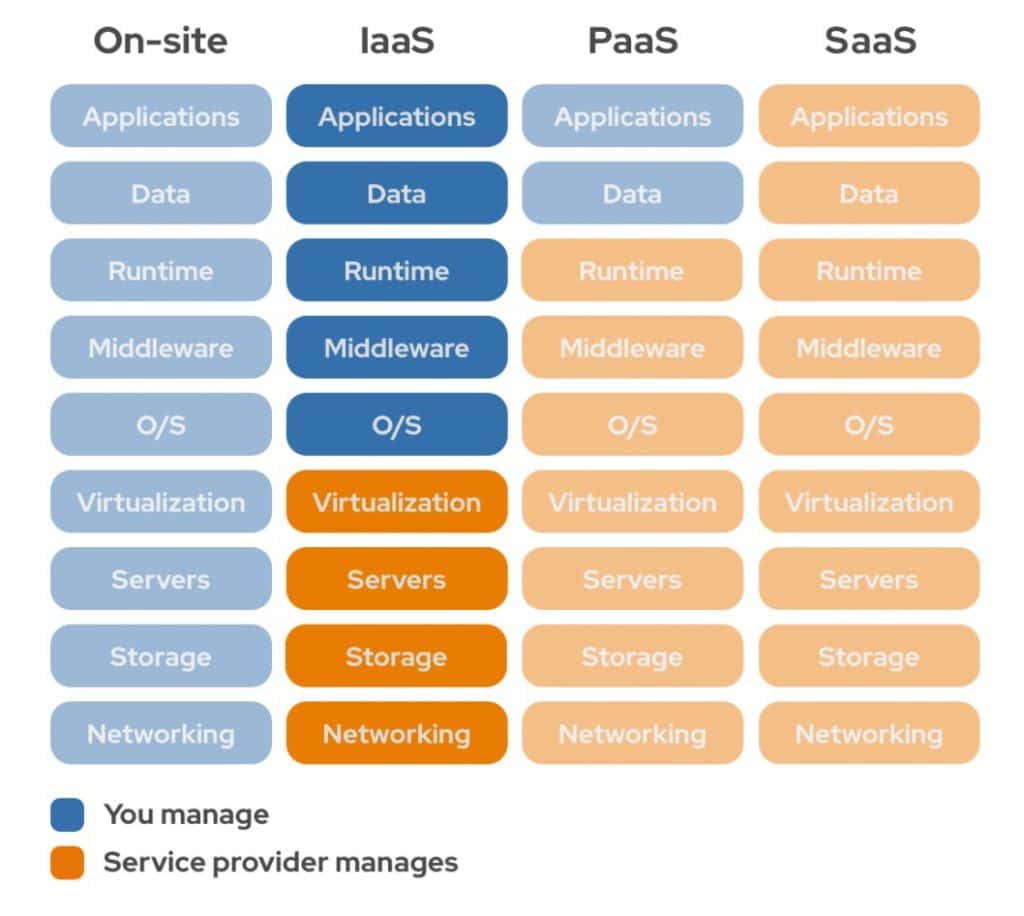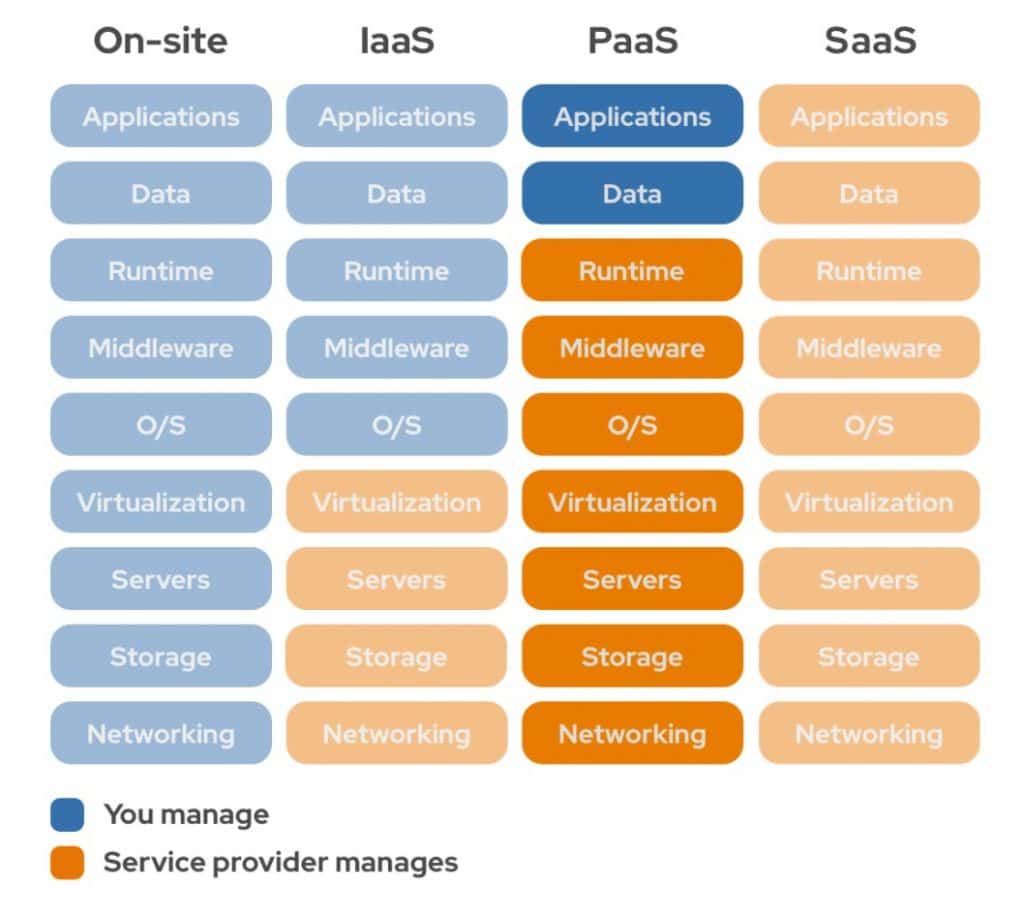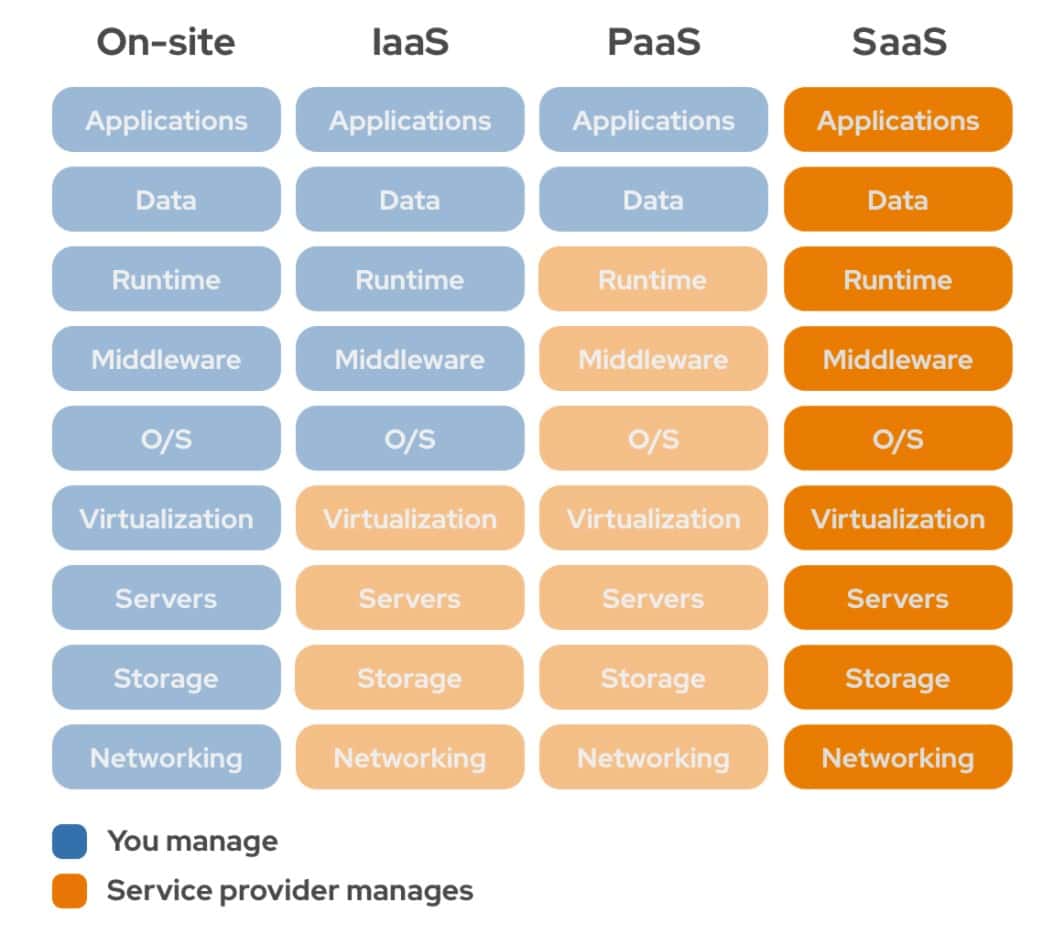“As-A-Service” (aaS) is as much a business model and approach to doing business as it is a product. From sales teams to field technicians to administrative staff, the autonomy of the software provides dependability to meet the needs of the organization. Be it infrastructure-as-a-service (IaaS), platform-as-a-service (PaaS), or software-as-a-service (SaaS), each is a model that needs to run seamlessly, integrate well within the existing corporate structure, and improve existing workflows.
Depending on the amount of data stored, the number of people using a service, and the complexity of the software, your aaS cloud computing solution may require an experienced professional or team to manage. No matter how autonomous the aaS may be, security and support should also be top of mind. So, as important as choosing the right aaS is, choosing the correct cloud host to support your needs is equally important.
What are IaaS, PaaS, & SaaS?
One of the main differences is how much on-premise infrastructure your company can – and wants to — manage. Each variety of cloud computing leaves you less to manage internally, but less management may come at the cost of customization. These services vary based on their scope and complexity. However, they can also be very industry-specific which, in some cases, might make them very expensive.
Explaining these services with the baseline of an on-site IT infrastructure may give you a better place to compare. An on-site infrastructure is the most cumbersome to manage but also customizable since your hardware and software are all there ready for you to adjust to your needs. The in-house IT team manages, updates, and maintains each component and the equipment.
Cloud computing lightens the burden on the IT department from a hardware standpoint and may permit a smaller team of professionals to manage more data. This also allows the team to focus on other software customization and integration.
There are 3 main types of cloud computing as-a-service options and each one covers a degree of management for you: infrastructure-as-a-service (IaaS), platform-as-a-service (PaaS), and software-as-a-service (SaaS).
IaaS allows your company to manage business resources like the network, dedicated servers, and data storage in the cloud. For example, the M5 Cloud provides a simple web interface or an open API to create virtual machines within minutes. Virtual machines and disks can be “hot-migrated” for zero downtime hardware maintenance.
PaaS lets you and your developers host, build, and deploy consumer-facing apps. Resources can be scaled up or down with changes in your business by building on virtualization technology. Examples are AWS Elastic Beanstalk, Windows Azure, Google App Engine, etc.
SaaS offers both consumers and businesses cloud-based tools and applications. These can be full solutions or parts of a larger corporate function that the company doesn’t want to manage or update such as ecommerce, or apps you only needed periodically, like tax software. Examples are Salesforce, Cisco WebEx, Zoom, etc.
Comparison Chart
On the chart, you see a list of criteria. Let’s just review those quickly so you know what they are and why they’re important.
- Applications – software that performs a specific task or set of related tasks.
- Data – any digital information exchanged or stored.
- Runtime – the time from launch to operation.
- Middleware – ensures your operating system or database communicates with applications.
- O/S – operating system.
- Virtualization – lets you run several applications on a single server without sacrificing reliability allowing for more efficient utilization of your hardware.
- Servers – a computer and/or program that manages access to a centralized cloud network.
- Storage – the amount of data held on a single server or cloud network.
- Networking – transporting and exchanging data between nodes.
Things to Consider for IaaS, PaaS, and SaaS
As these are different categories of service that could require a varying time commitment for IT support, along with offering special features, it may be important to meet with your cloud host to review your options. However, here are some considerations before you seek consultation.
In this section, we’re going to move backward (SaaS to IaaS) because as businesses grow, they tend to start with one or several SaaS solutions, go to PaaS, then IaaS, and finally transition into on-site. Their IT departments then utilize methods of cloud computing based on the needs of each division rather than as an enterprise solution. The reasons for this evolution are many: budget, security, control, and customization, to name a few.
SaaS
A SaaS solution may not integrate well with other systems. Once integrated, support may be costly and a contract may be too expensive to back out of. Moreover, your data security is dependent on their diligence. The SaaS provider’s downtime is your downtime, and you may be vulnerable to their bad business decisions.
PaaS
PaaS takes more to manage internally but if partners use the same network, things get easier from a supply chain, logistics, and comms perspective. Security and downtime can be a concern, as well as raising the cost of support. Some app and SaaS integration may be an issue. There might be some runtime issues as you may not be able to develop custom dependencies with the platform.
IaaS
IaaS contains the base cloud computing tools you need to set up your network. The size and experience of your IT team depends on your organization’s size, type, number of users, number of visitors, and the data load. Support and security for IaaS require a knowledgeable and trusted source. Some more internal data security measures may be required from both IT and general staff.
Cloud Host’s Role in IaaS, PaaS and SaaS
The role of your cloud service provider depends on your needs. You want knowledgeable and attentive engineers who are familiar with your systems and network. They’ll be able to help you get set up and offer assistance for any issues. Having an IT professional on staff to manage your systems and act as a liaison for cloud services may be required depending on whether you choose SaaS, PaaS, or IaaS.
For a full SaaS solution, your cloud provider generally takes a back seat to your SaaS provider’s customer service. If you choose PaaS with some helpful apps, your cloud host can offer support that avoids downtime or security issues.
M5 is an IaaS platform that offers an improved experience for both dedicated servers and cloud. The difference is in the support. With large cloud providers, IaaS can be a “bare-bones” experience, even with virtualization, that rarely takes the individual customer’s needs into consideration.
Individualization
Whatever you choose, SaaS, PaaS, or IaaS, it can separate your business from the competition. IaaS can seem complicated but with solid support, it can be a differentiator. M5’s moniker is “where the tech-savvy build exactly what they need” and this is accomplished by providing the tools and the server options required for an IT professional to bring their ideas and expertise to life.
With a highly available (HA) IaaS platform designed to deliver the power and flexibility businesses need to function smoothly and thrive. This is why M5 stands out in the cloud computing space.






